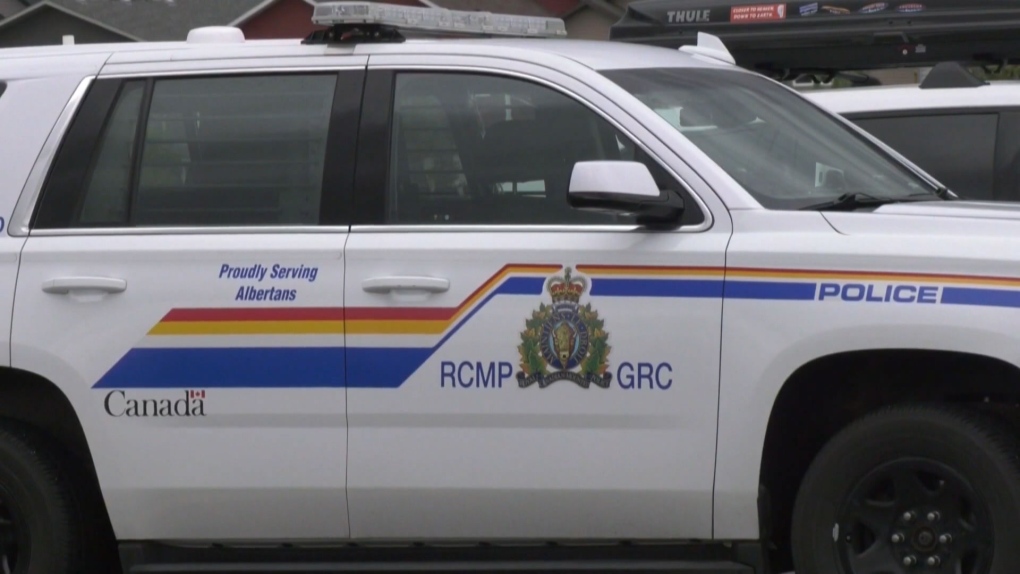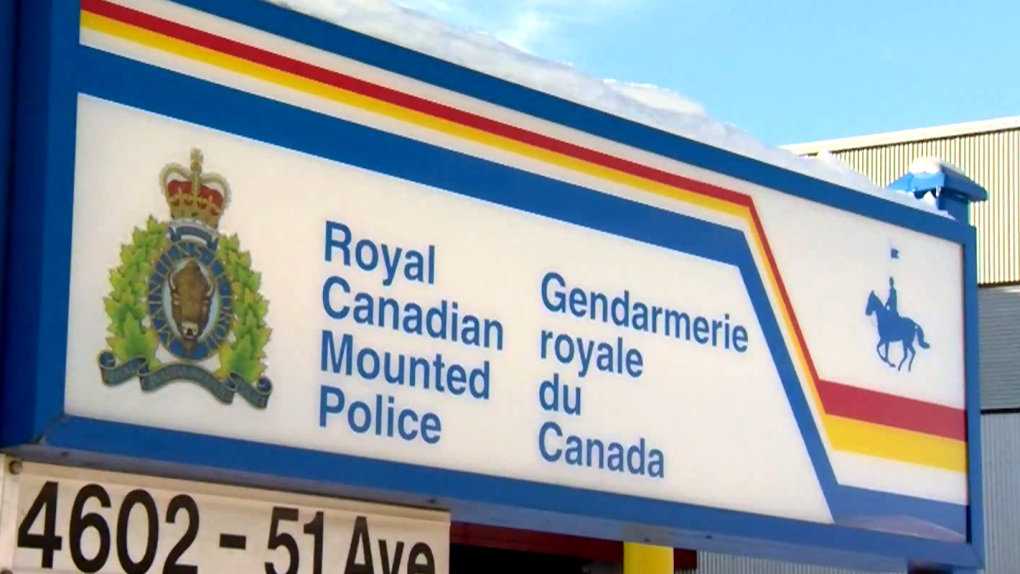Police payment freeze in Alberta welcomed — but then what?

Policing shortages and high crime rates run deeper than the province's "top-down approach" can resolve, said the new president of the Rural Municipalities of Alberta.
Kara Westerlund, elected in November to lead the association, said the RMA welcomes a payment hike freeze for RCMP services in rural municipalities. But the organization sees no clear, effective and affordable path forward for policing RMA's 69 counties and municipal districts.
"We're never getting anywhere with this top-down approach," Westerlund told The Macleod Gazette. "The world doesn't work that way, that things get pushed down and then they work. So there is a lot of frustration on the side of municipalities."
- Sign up for breaking news alerts from CTV News, right at your fingertips
- The information you need to know, sent directly to you: Download the CTV News App
The province announced Nov. 6 that would it absorb a 39 per cent hike in RCMP costs in 2025 that rural and small urban municipalities would have otherwise paid. The freeze stays in place until the end of March 2026 and will cost the province $27 million.
Recent legislation enables Alberta to create a provincial police agency. Critics say it's part of a plan to replace the RCMP with a provincial service.
The Public Safety Statutes Amendment Act, 2024 received royal assent in May. It paves the way for putting police-like functions performed by Alberta Sheriffs under the same kind of legislative framework and civilian oversight as Alberta's police services.
Deputy Premier Mike Ellis, the minister of public safety and emergency services, has said that the legislation is about oversight and "putting boots on the ground" to complement the RCMP and other police services.
"The intention here is to augment and support all police services in Alberta — everything from northern to central to southern Alberta," he told The Gazette earlier this year.
Westerlund said: "I don't want to knock the sheriffs and boots on the ground. They're doing excellent work in our communities and we truly appreciate that."
But municipalities need police trained to deal with all situations. Sheriffs sent to rural Alberta focus on specific roles and situations, the Brazeau County councillor said.
Without the freeze, funding next year would have been based on 2025 costs instead of the 2018 costs used in the original model. The government attributes the spike to RCMP collective agreements.
The model began in 2020 with affected municipalities paying 10 per cent of 2018 costs. The rate increased to 15 per cent a year later, 20 per cent the following year, and finally 30 per cent in 2023 and 2024.
Along with rural municipalities, the hike freeze and expiring funding model apply to small urban municipalities — towns and villages with populations under 5,000.
Promise of local consultation
The Ministry of Public Safety and Emergency Services said in a recent statement emailed to The Gazette that municipalities will have their say before the freeze expires.
"Alberta's government is in the early stages of planning comprehensive engagement sessions on the Police Funding Model planned for next spring," press secretary Arthur Green in the statement.
"The review will include opportunities for small and rural municipalities policed by the RCMP to provide input."
After its review concludes, the government will "work with municipalities to determine next steps for the end of 2025," Green said.
Westerlund lacks confidence in consultation promises. The RMA sits on an interim advisory board for policing in Alberta, and the province hasn't listened so far, she said.
The board made a long list of recommendations to a past justice minister and none were acted upon, said Westerlund.
"The work's been done to set and pave the way, but somebody must have literally taken the document and thrown it in the trash. They just gave it no time."
The advisory board's next meeting is in January.
"We're wondering if we're even going to go, because the province continues not to have anything to give to us," Westerlund said.
An RMA position statement on crime and policing addresses "continued concerns" over the Police Funding Model, or PFM, which it says has failed to match payments to actual service improvements or results. Payments based on equalized assessment don't align with the varying and unique needs of rural Alberta, the statement says.
"Requiring municipalities to contribute to frontline policing with no consultation as to how the revenue collected will be used or how additional officers will be distributed across the province reflects a downloading of costs without increased municipal input," the statement says.
"Any funds collected from municipalities under the PFM should be reinvested within the region from which they were collected."
For transparency, municipalities should be allowed to designate the provincial policing levy as a separate requisition on municipal tax notices, the RMA contends.

The case against RCMP replacement
Westerlund sees replacing the RCMP as a costly non-solution.
She acknowledged that recruitment is a problem but said it's wrong to blame the RCMP for that, praising the organization for its civilian and non-civilian services, community connections, complaint processes and oversight.
"This isn't the RCMP not putting people where they need to be. It's got nothing to do with that. The reality is that people don't want to be police officers anymore, so you've got a bigger issue there."
A vacancy rate of nearly 25 per cent is a North American phenomenon.
"It's pretty easy to pass the buck and blame somebody else and say, that's your fault, RCMP, for not filling boots on the ground. But I'll be the first to say, 'No, it's a societal issue.'"
Westerlund says that underlying courts and social issues lie at the core of high countryside crime rates.
"We have a judicial problem — a bail problem, a bail ladder problem," said Westerlund, a county councillor for 14 years. "And honestly, if you want to dig down, we have a mental health problem."
The RCMP said in published reports in September that it had 1,772 police officer positions in Alberta under contract with the province. Of those, 306 or 17 per cent were vacant. But 124 of the vacancies were for leave or sickness.
Statistics Canada data show that in 2021, police in Canada with mostly rural jurisdictions reported disproportionately higher crime rates than urban police. Although they served 15 per cent of the provinces' populations, they reported 24 per cent of violent crimes, 18 per cent of property crimes, 30 per cent of Criminal Code traffic offences and 23 per cent of other Criminal Code violations.
The rural-urban gap is also pronounced using another StatsCan measure, the Crime Severity Index (CSI), which meshes seriousness and volume to compare crime — the bigger the number, the worse the problem.
The overall CSI number in rural areas was 91.9 in 2021, compared with 69.3 in urban areas.
For violent crime, a dramatic rural-urban gap emerged between 2011 and 2021. There was virtually no gap in 201— 84.8 rural, 84.9 urban. But the CSI for violent crime in 2021 was 124.1 rural, compared with 85.2 urban.
The RMA position statement puts crime rates in rural Alberta at 33 per cent higher than they are in urban Alberta. "In many rural areas, residents and businesses perceive crime as a crisis that significantly impacts their quality of life," it says.
Westerlund said local is the way to go, when it comes to policing the less populated areas of Alberta.
"We're the closest to our residents. We're the closest to the boots on the ground," she said.
"My next-door neighbour is an RCMP officer. If I've got a question for him, I just walk across the road, knock on his door and find out the truth of what's actually going on. Because these men and women eat and breathe it every day."
CTVNews.ca Top Stories

Trudeau asked Trump for California, Vermont to curb annexation talks
Justin Trudeau says U.S. president-elect Donald Trump kicked the tires on the potential annexation of Canada during their recent meeting in Florida, but the topic was quickly dropped when the prime minister countered with a request for two states.
Man dies after falling into sink hole at Fernie Alpine Resort
An investigation is underway by Elk Valley RCMP after a man died Wednesday after falling into a sink hole at Fernie Alpine Resort.
One Alberta man gets jail, another community time for 2022 Coutts border protest
Two Alberta men have been sentenced for their roles in the illegal Coutts border blockade in 2022.
Liberal leadership: Carney expected to launch bid next week, Clark organizing heavily, Gould considers entering
While longtime cabinet ministers Dominic LeBlanc and Melanie Joly have officially announced they have no plans to run for the Liberal leadership, several well-known faces are organizing behind the scenes to launch bids of their own.
Amid tense backdrop, Canadian warship gets friendly message from Chinese vessel tracking movements
Daybreak on HMCS Ottawa began with a call over the marine radio from a Chinese warship. The call is coming from a Chinese Frigate known as the Yuncheng, the warship has been shadowing HMCS Ottawa through the South China Sea for two days and counting.
'Everything is gone': Sask. business owner loses Los Angeles home to wildfires
A Saskatchewan business owner lost her Los Angeles home as wildfires ravage parts of the city.
Trump gets no-penalty sentence in his hush money case, while calling it 'despicable'
U.S. president-elect Donald Trump was sentenced Friday to no punishment in his historic hush money case, a judgment that lets him return to the White House unencumbered by the threat of a jail term or a fine.
'Devastating beyond words': Paris Hilton shows remnants of home destroyed by L.A. fire
Socialite Paris Hilton shared a video showing her ravaged house, destroyed by the L.A. wildfires., 'I’m standing here in what used to be our home, and the heartbreak is truly indescribable,' Hilton wrote on Instagram.
School software hack hits school boards across six Canadian provinces
School boards across Canada are grappling with the fallout from a significant cyberattack on PowerSchool, a widely used administration software platform.

































